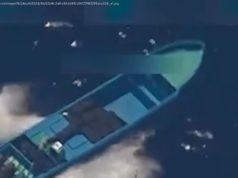The storm could potentially bring ‘damaging winds and life-threatening flash flooding from heavy rainfall’ to Hawaii
Hurricane Lane, a Category 4 storm, is expected to make a dangerously close encounter with the Hawaiian Islands over the next several days.
Although it is not certain whether the storm, packing peak winds of 150 mph, will directly strike the islands or just graze them, significant effects from rain, wind and waves are becoming increasingly likely.
On Tuesday morning, the Central Pacific Hurricane Center, based in Honolulu, posted hurricane watches for the eastern Hawaiian Islands, including the Big Island and Maui, as tropical-storm force winds and heavy rain could effect those areas as soon as Wednesday or Thursday. Watches may be extended to the western islands, the Hurricane Center said.
This isn’t Florida. The landscape and infrastructure are different
The storm could potentially bring “damaging winds and life-threatening flash flooding from heavy rainfall” to the islands, the Hurricane Center warned. “As Lane is expected to be slow-moving as it nears the islands, it will produce large and damaging surf, mainly along exposed south and west facing shores,” it added.
While hurricanes and tropical storms frequently roam close to the islands, direct hits are rare. The last hurricane to make landfall in Hawaii was Iniki in 1992, which struck Kaua’i.
“This isn’t Florida. The landscape and infrastructure are different. Take this one seriously,” tweeted Michael Lowry, a strategic planner at FEMA and a tropical weather expert.
Lane could become the first hurricane to directly make landfall in Honolulu since Hawaii became a state, Axios reported. “If the storm were to make a significant impact on the island of Oahu, in particular, it could cause flooding at Honolulu International Airport, the oil refinery at Barbers Point, and several large military installations, including Joint Base Pearl Harbor-Hickam,” it noted.
While the Big Island, at most immediate risk from Lane, has been hit by tropical depressions and storms, it also has never been struck directly by a hurricane-strength storm in modern records.
The Hurricane Center urged residents of Hawaii to prepare for the storm. In Kona, on the Big Island, it cautioned that at least 4 to 8 inches of rain could fall and that winds could exceed tropical-storm force (39 mph).
On Tuesday morning, Lane was positioned 450 miles south-southeast of Kona, tracking west at 12 mph. Over the next day, the storm is predicted to turn more to the north, but how sharply is the critical question. The sharper the turn to the north, the more likely one or more islands will endure a direct hit. If the storm pursues more of a westerly course, it may just brush the islands.
“It is much too early to confidently determine which, if any, of the main Hawaiian Islands will be directly impacted by Lane,” the Hurricane Center said. “Even if the center of Lane were to remain offshore, it is important to remember that impacts from a hurricane can extend well away from the center.”
While the storm has gained strength over the past day and is only 7 mph shy of Category 5 strength, the Hurricane Center predicts it to begin slowly weakening over the next 24 hours due to increasing wind shear, which would disrupt thunderstorm development.
However, the storm has attained an annular structure, meaning its large eye is surrounded by a single, uniform ring of thunderstorms. Just 4 percent of hurricanes and typhoons are annular, and they are known for their staying power, weakening more slowly under unfavorable conditions compared with conventional storms.
In other words, Lane is likely to maintain hurricane strength when it makes a close approach or direct strike on the Big Island on Thursday. It may take until the weekend for Lane to succumb to wind shear and weaken to a tropical storm.






